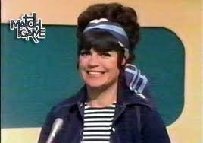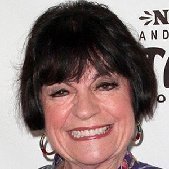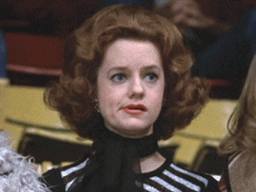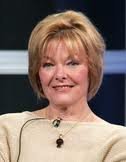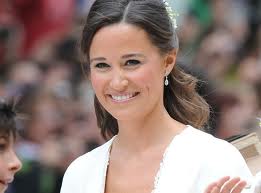The history of the margarita is one of folklore due to its numerous origin stories. According to cocktail historian David Wondrich, the margarita is related to the brandy daisy (margarita is Spanish for "daisy"), remade with tequila instead of brandy. (Daisies are a family of cocktails that include a base spirit, liqueur, and citrus. A sidecar and gin daisy are other related drinks.) There is an account from 1936 of Iowa newspaper editor James Graham finding such a cocktail in Tijuana, years before any of the other margarita "creation myths".
The Cafe Royal Cocktail Book, published in the UK in 1937, contains a recipe for a Picador using the same concentrations of tequila, triple sec, and lime juice as a margarita. One of the earliest stories is of the margarita being invented in 1938 by Carlos "Danny" Herrera at his restaurant Rancho La Gloria, halfway between Tijuana and Rosarito, Baja California, created for customer and former Ziegfeld dancer Marjorie King, who was allergic to many spirits, but not to tequila.
This story was related by Herrera and also by bartender Albert Hernandez, acknowledged for popularizing a margarita in San Diego after 1947, at the La Plaza restaurant in La Jolla. The story was debunked in 1992 by the San Diego Reader.
According to Jose Cuervo, the cocktail was invented in 1938 by a bartender in honor of Mexican showgirl Rita de la Rosa.
Hussong's Cantina also claims to have been the site of the margarita's creation in Ensenada, Baja California, in 1941. Bartender Don Carlos Orozco reputedly named a new drink after Mexican-German patron Margarita Henkel Cesena, a frequent customer to the cantina. Cesena was a ranch operator by trade, and it is disputed whether she was the daughter of a German ambassador as the story claims. Hussong's, however, has enjoyed widespread popularity as the home of the original margarita.
There are also claims that the margarita was first mixed in Juárez, Chihuahua at Tommy's Place Bar on July 4, 1942, by Francisco "Pancho" Morales. Morales later left bartending in Mexico to become a US citizen, where he worked as a milkman for 25 years. Mexico's official news agency Notimex and many experts have said Morales has the strongest claim to having invented the margarita.
Others say the inventor was Dallas socialite Margarita Sames, when she concocted the drink for her guests at her Acapulco, Guerrero vacation home in 1948. Tommy Hilton reportedly attended, bringing the drink back to the Hilton chain of hotels. However, Jose Cuervo was already running ad campaigns for the margarita three years earlier, in 1945, with the slogan, "Margarita: It's more than a girl's name."
The IBA (IBA Official list of Cocktails) standard is 10:4:3, that is tequila:triple sec:fresh lime juice.
The "Original Margarita" recipe as given by Cointreau on their website has slightly more of their own sweet liqueur: 1 part white tequila, 1⁄2 part Cointreau, and 1⁄2 part fresh squeezed lime juice.
The frozen margarita is a margarita served as an ice slush, similar to other tropical-inspired frozen mixed drinks like the hurricane or piña colada. The ingredients can be processed with ice in a kitchen blender, or for larger output, a slush or soft-serve ice cream machine is used: a cooled, horizontal cylinder has a rotating impeller which churns the mix so it will not freeze solid, and the thick half-frozen slush is dispensed from a spout. Frozen margaritas were first served in La Jolla, when Albert Hernandez Sr. stopped using crushed ice and instead combined the ingredients in a blender in 1947. The dedicated frozen margarita machine was introduced by Mariano Martinez in Dallas in 1971.
A lemonade or limeade margarita can be quickly whipped up by using frozen lemonade or limeade concentrate in place of lime juice.
Margaritas may be served in a variety of glasses, most notably the margarita glass, a variant of the classic champagne coupe; this is particularly associated with blended fruit margaritas, and the glass is also used for dishes such as guacamole or shrimp cocktails. In formal settings margaritas are often served in a standard cocktail glass, while in informal settings, particularly with ice, margaritas may be served in an old fashioned glass, cocktail glass, wine glass, pint glass, and even large schooners.
The margarita cocktail was the December 1953 "Drink of the Month" in Esquire' magazine, with this recipe:
- 1 ounce tequila
- Dash of Triple Sec
- Juice of 1⁄2 lime or lemon
- Pour over crushed ice, stir. Rub the rim of a stem glass with rind of lemon or lime, spin in salt—pour, and sip.
It was further popularized by the 1977 song "Margaritaville" by Jimmy Buffett, and in 2004 it was described as "the most popular mixed drink in America". It was used in the title of the 1983 single "Margarita Time" by the English rock band Status Quo and was the inspiration for the cover artwork.
The margarita may be popular because, in addition to sweet and sour flavors, it includes salt.
Another common origin tale begins the cocktail's history at the legendary Balinese Room in Galveston, Texas where, in 1948, head bartender Santos Cruz created the margarita for singer Peggy (Margaret) Lee. He supposedly named it after the Spanish version of her name, Margarita.
The first known publication of a margarita recipe was in the December 1953 issue of Esquire, with a recipe calling for an ounce of tequila, a dash of triple sec and the juice of half a lime or lemon. A recipe for a tequila-based cocktail first appeared in the 1930 book My New Cocktail Book by G. F. Steele. Without noting a specific recipe or inventor, a drink called the Tequila Daisy was mentioned in the Syracuse Herald as early as 1936. Margarita is Spanish for Daisy, which is a nickname for Margaret.
A later, certainly false, story is that the margarita was invented in October 1961, at a party in Houston, Texas, by party goer Robert James "Rusty" Thomson while acting as bartender. He concocted a mixture of equal parts tequila, Controy orange liqueur, lime, and crushed ice in a salt-rimmed glass.
When you're craving the cheesy-fried goodness of a popper, but want something a little different from the average jalapeno popper, make these Cheesy Crab Poppers. They're crispy, cheesy, and have just a light kick to 'em, making them the perfect party appetizer.
- 1 (8-1/2-ounce) package corn muffin mix
- 1 cup Panko bread crumbs
- 1 cup shredded sharp cheddar cheese
- 4 ounces cream cheese, softened
- 1 stick butter, melted
- 1 egg, lightly beaten
- 1/4 cup milk
- 2 scallions, thinly sliced
- 1/4 teaspoon salt
- 1/4 teaspoon cayenne pepper
- 1 (10-ounce) container lump crab meat, drained well
- 2 cups vegetable oil
- In a large bowl, combine corn muffin mix, bread crumbs, cheddar cheese, cream cheese, butter, egg, milk, scallions, salt and cayenne pepper; mix well. Gently stir in crab meat until combined. Form mixture into 1-1/2-inch balls.
- In a deep skillet or soup pot over medium-high heat, heat oil until hot. Add several crab balls to oil, making sure not to overcrowd. Cook 4 to 5 minutes, or until golden brown, stirring occasionally. Place on paper towel-lined plate to drain. Repeat with remaining crab balls. Serve warm.
1944 – Swoosie Kurtz, American actress
1947 – Jane Curtin, American actress
1983 – Pippa Middleton, Sister of Catherine, Duchess of Cambridge








